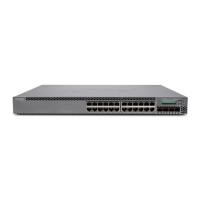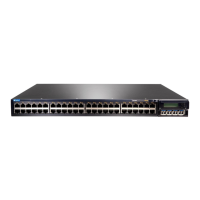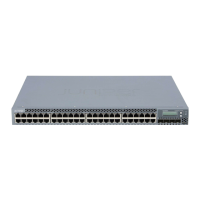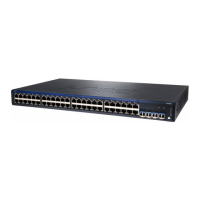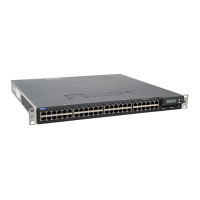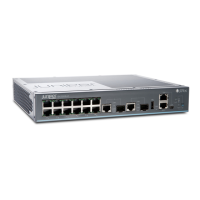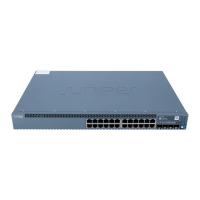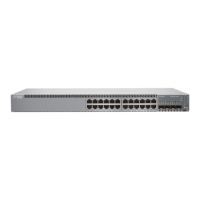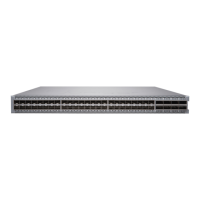Configuring Active Server Groups to Apply a Common DHCP Relay Agent Configuration
to Named Server Groups
You can configure an active server group. Using an active server group enables you to
apply a common DHCP relay agent configuration to a named group of DHCP server
addresses.
Use the statement at the [edit ... dhcpv6] hierarchy levels to configure DHCPv6 support.
To configure an active server group:
•
Specify the name of the active server group.
[edit forwarding-options dhcp-relay]
user@host# set active-server-group myServerGroup
To create an active server group as a global DHCP relay agent configuration option,
include the active-server-group statement at the [edit forwarding-options dhcp-relay]
hierarchy level. To have the group apply only to a named group of interfaces, include the
active-server-group statement at the [edit forwarding-options dhcp-relay group
group-name] hierarchy level.
Including the active-server-group statement at the [edit forwarding-options dhcp-relay
group group-name] hierarchy level (as a group-specific option) overrides the effect of
including the active-server-group statement at the [edit forwarding-options dhcp-relay]
hierarchy level as a global option.
Related
Documentation
Extended DHCP Relay Agent Overview on page 46•
• Grouping Interfaces with Common DHCP Configurations on page 89
Disabling DHCP Relay
You can disable DHCP relay on all interfaces or a group of interfaces.
To disable DHCP relay agent:
1. Specify that you want to configure override options.
[edit forwarding-options dhcp-relay]
user@host# edit overrides
2. Disable the DHCP relay agent.
[edit forwarding-options dhcp-relay overrides]
user@host# set disable-relay
Related
Documentation
Extended DHCP Relay Agent Overview on page 46•
• Deleting DHCP Local Server and DHCP Relay Override Settings on page 30
Copyright © 2017, Juniper Networks, Inc.80
DHCP and Other System Services Feature Guide for EX2300, EX3400, and EX4300 Switches
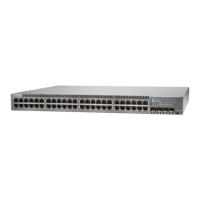
